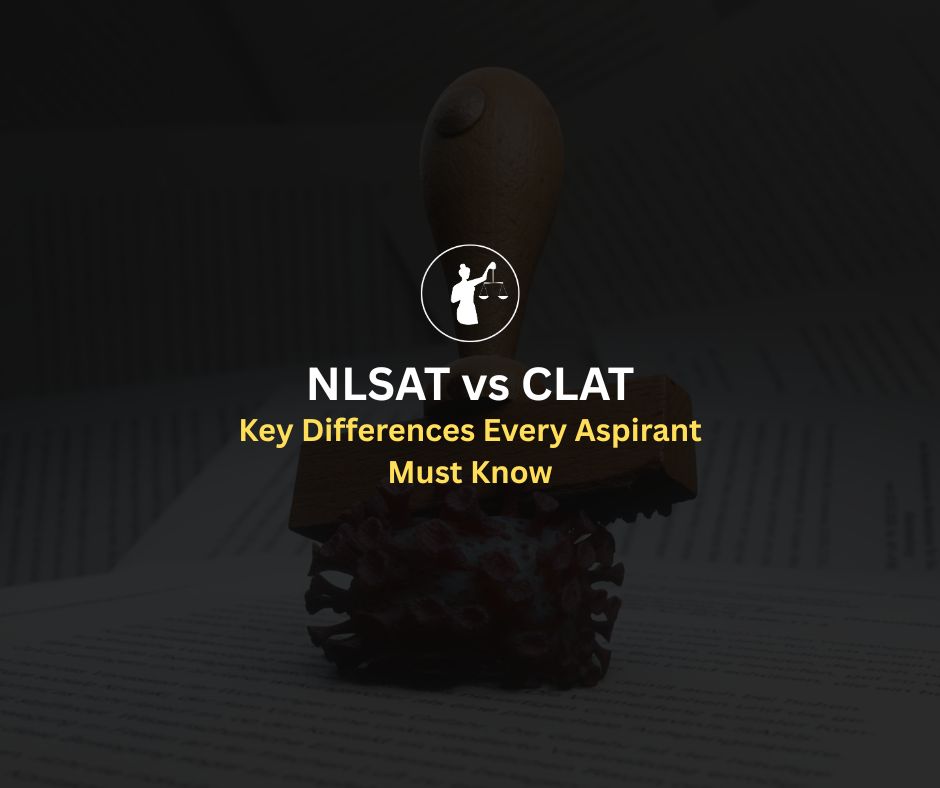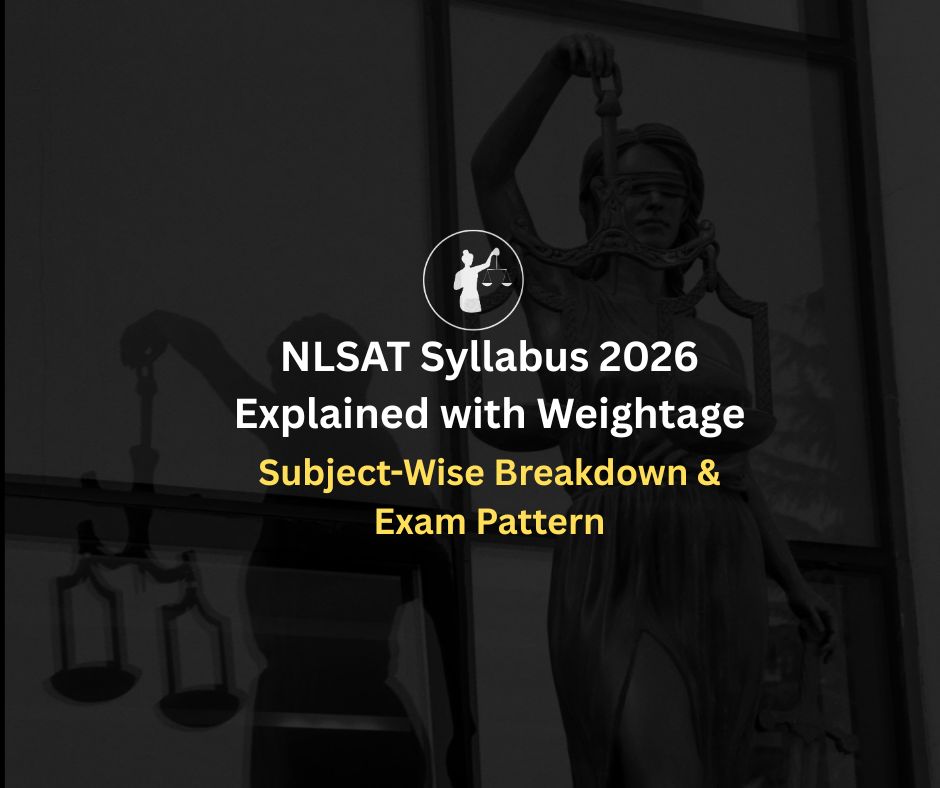The Common Law Admission Test (CLAT) 2026 is a highly competitive entrance exam for securing admission into top National Law Universities (NLUs) in India. The exam is designed to test a candidate’s reading comprehension, logical reasoning, and problem-solving abilities.
Signup to NLTI for free Mockups, past papers and much more
Duration: 2 hours
Marking Scheme: +1 for correct answer, -0.25 for incorrect answers
Mode: Offline (Pen & Paper-Based Test)
The Logical Reasoning section in CLAT plays a crucial role in testing a candidate’s ability to analyze, interpret, and evaluate arguments. This section is not based on rote memorization but instead assesses critical thinking and problem-solving skills, which are essential for a legal career.
✅ High Scoring Potential:
With consistent practice, candidates can improve accuracy and score well in this section.
✅ Time-Saving:
Logical reasoning questions follow patterns and logical structures, making them easier to solve with the right approach.
✅ Useful for Legal Reasoning:
The argument analysis and deduction skills developed in this section also help in Legal Reasoning, another major part of CLAT.
Also Read: CLAT 2026 Exam Pattern Explained
Since Logical Reasoning carries around 20% weightage, excelling in this section can significantly impact your total score. Here’s how:
Improves Decision-Making:
Logical reasoning enhances critical thinking, helping candidates make quick and informed choices in the exam.
Reduces Negative Marking:
With better analytical skills, candidates can eliminate incorrect options, reducing the risk of negative marking.
Increases Efficiency:
Practicing logical reasoning regularly improves speed and accuracy, ensuring better time management in the exam.
Boosts Overall Rank:
Scoring well in this section can help candidates break the tie with other aspirants and secure admission into top NLUs.
🎯 Bottom Line: Logical Reasoning is a make-or-break section in CLAT 2026! Focused preparation can help you maximize your score and secure a top rank in the exam.
The Logical Reasoning section in CLAT 2026 assesses your ability to analyze arguments, recognize patterns, and make logical deductions. The questions are broadly divided into three categories:
Critical reasoning questions evaluate your ability to analyze and evaluate arguments. These questions require reading comprehension, logical thinking, and an understanding of how arguments work.
✅ Inference-Based Questions:
Identify conclusions based on given statements.
✅ Assumption-Based Questions:
Recognize hidden assumptions in arguments.
✅ Strengthening & Weakening Arguments:
Determine what makes an argument stronger or weaker.
✅ Cause & Effect Questions:
Analyze relationships between events and conclusions.
💡 Example:
Statement: Increasing the price of petrol will reduce traffic congestion.
Question: Which of the following, if true, would most strengthen the above argument?
a) People are highly sensitive to fuel price changes.
b) Traffic congestion depends only on road width.
c) Public transport is unreliable.
d) People prefer personal vehicles over public transport.
✅ Answer: (a) People are highly sensitive to fuel price changes.
Analytical reasoning questions test your ability to solve problems using logic, structure, and pattern recognition.
These questions often involve arrangements, sequences, and relationships.
✅ Syllogisms
Logical statements where conclusions must be drawn.
✅ Puzzles & Seating Arrangements
Positioning of people or objects based on conditions.
✅ Blood Relations
Determining family relationships through given statements.
✅ Number & Letter Series
Finding the missing term in a sequence.
💡 Example:
Question: A is the brother of B. B is the mother of C. D is the father of C.
How is A related to D?
a) Father
b) Son-in-law
c) Brother-in-law
d) Grandfather
✅ Answer: (c) Brother-in-law
These questions focus on pattern recognition and deductive reasoning, where you need to analyze relationships and derive conclusions from given premises.
✅ Statement & Conclusion
Identifying valid conclusions from given statements.
✅ Statement & Assumption
Recognizing underlying assumptions in arguments.
✅ Coding-Decoding
Understanding coded language patterns.
✅ Odd-One-Out & Analogies
Identifying relationships between elements.
💡 Example:
Question: Find the missing term in the sequence: 2, 6, 12, 20,?
a) 28
b) 30
c) 35
d) 40
✅ Answer: (b) 30 (Pattern: +4, +6, +8, +10)
Practice Daily:
Solve at least 10–15 logical reasoning questions every day.
Read Editorials & Opinion Pieces:
Helps improve critical reasoning skills.
Take Mock Tests:
Analyze mistakes & improve accuracy.
Learn Shortcuts & Strategies:
Speed up problem-solving with smart techniques.
Also Read: How to Prepare for CLAT 2026 in 6 Months
The Logical Reasoning section in the CLAT 2026 exam is one of the most important and high-scoring sections.
It evaluates your ability to think critically, analyze arguments, and recognize patterns.
Here’s why this section holds immense value in your CLAT preparation:
The Logical Reasoning section in the CLAT 2026 exam can be a game-changer if approached strategically.
To maximize your CLAT preparation, follow this step-by-step plan to build a strong foundation, improve accuracy, and enhance speed.
Before diving into complex logical reasoning questions, ensure you understand the fundamentals. The Logical Reasoning section includes critical reasoning, analytical reasoning, and logical deductions, all of which require strong conceptual clarity.
MK Pandey’s Analytical Reasoning
Best for mastering critical reasoning (assumptions, inferences, strengthening & weakening arguments).
RS Aggarwal’s Logical Reasoning
Ideal for analytical reasoning, including syllogisms, puzzles, and seating arrangements.
Previous Year CLAT Question Papers
Essential for understanding question trends and difficulty levels.
💡 Tip: Start with basic logical reasoning concepts and gradually move to complex problem-solving techniques.
A large portion of CLAT Logical Reasoning questions revolve around critical reasoning and analytical reasoning. To excel in this, focus on:
Understand how to evaluate arguments, identify assumptions, and draw conclusions logically.
Learn to identify and analyze causal connections in arguments.
Strengthen your ability to recognize series, puzzles, and deductions.
Once you have built conceptual clarity, start practicing logical reasoning questions daily to enhance speed and accuracy.
Practice different types of reasoning-based questions to improve analytical thinking.
Take Sectional Tests & CLAT Mock Tests Regularly
Solve easier questions first to gain momentum.
💡 Tip: Set a timer while solving sectional tests to improve speed and accuracy.
Practicing without analyzing mistakes can limit improvement. After each mock test or practice session, do the following:
Identify the common types of mistakes you make (misinterpretation, calculation errors, or assumption mistakes).
Maintain a log of your accuracy rate and time taken per question.
Accuracy is more important than speed initially. Once accuracy is high, work on reducing time per question.
💡 Tip: Maintain a "mistake journal" to record errors and revisit them weekly.
To maximize your CLAT 2026 Logical Reasoning score, follow these exam-day strategies:
If an answer option seems illogical, eliminate it immediately.
Don’t get stuck on a difficult puzzle; move on and return later if time permits.
Panicking can lead to misinterpretation of critical reasoning questions. Stay composed and apply logical techniques.
💡 Tip: If you’re stuck on a question, re-read the question carefully and identify keywords that hint at the correct logic.
Also Read: CLAT Syllabus 2026: Subject-Wise Breakdown & Important Tips
Logical Reasoning is a high-scoring yet challenging section in the CLAT 2026 exam. To master it, focus on building strong fundamentals, practicing daily, analyzing mock tests, and improving time management. Avoid common mistakes like guesswork, poor time management, and neglecting critical reasoning concepts.
Start your preparation today with the National Law Training Institute and give yourself the competitive edge in CLAT 2026! 🚀





